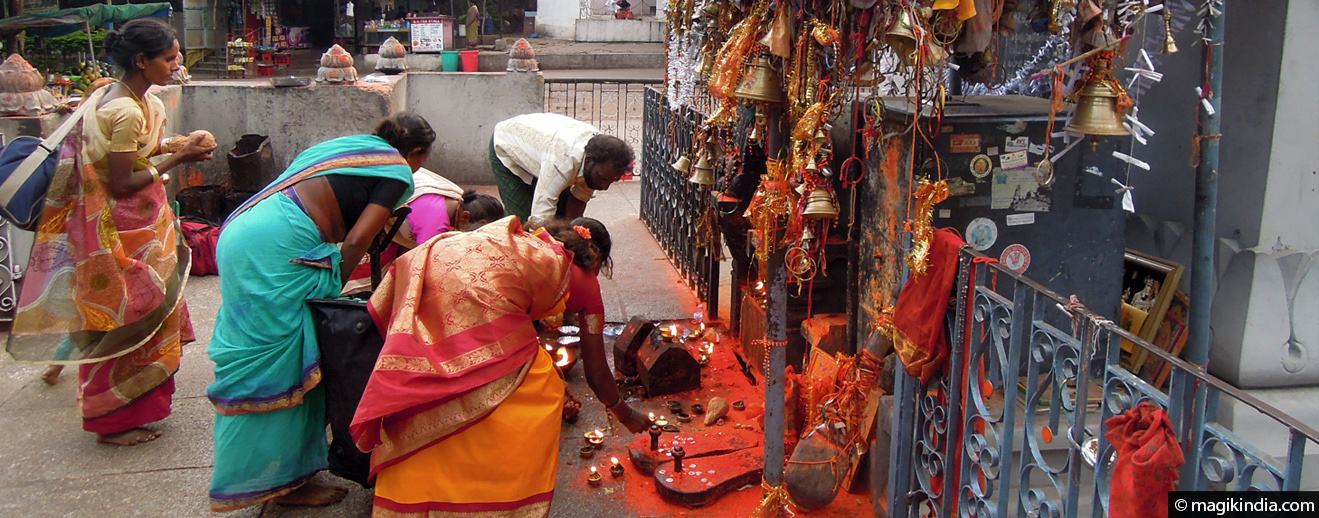
Tirupati, the abode of Lord Vishnu on earth
Tirupati, in Andra Pradesh, is visited by nearly 40 million pilgrims per year making it one of the highest places of pilgrimage in India. This city is famous for the Venkateswara Swami temple dedicated to the Hindu deity Vishnu, commonly called Balaji. According to legend, Tirupati is the ‘Bhuloka Vaikuntam’, that is to say the abode of Lord Vishnu on earth.
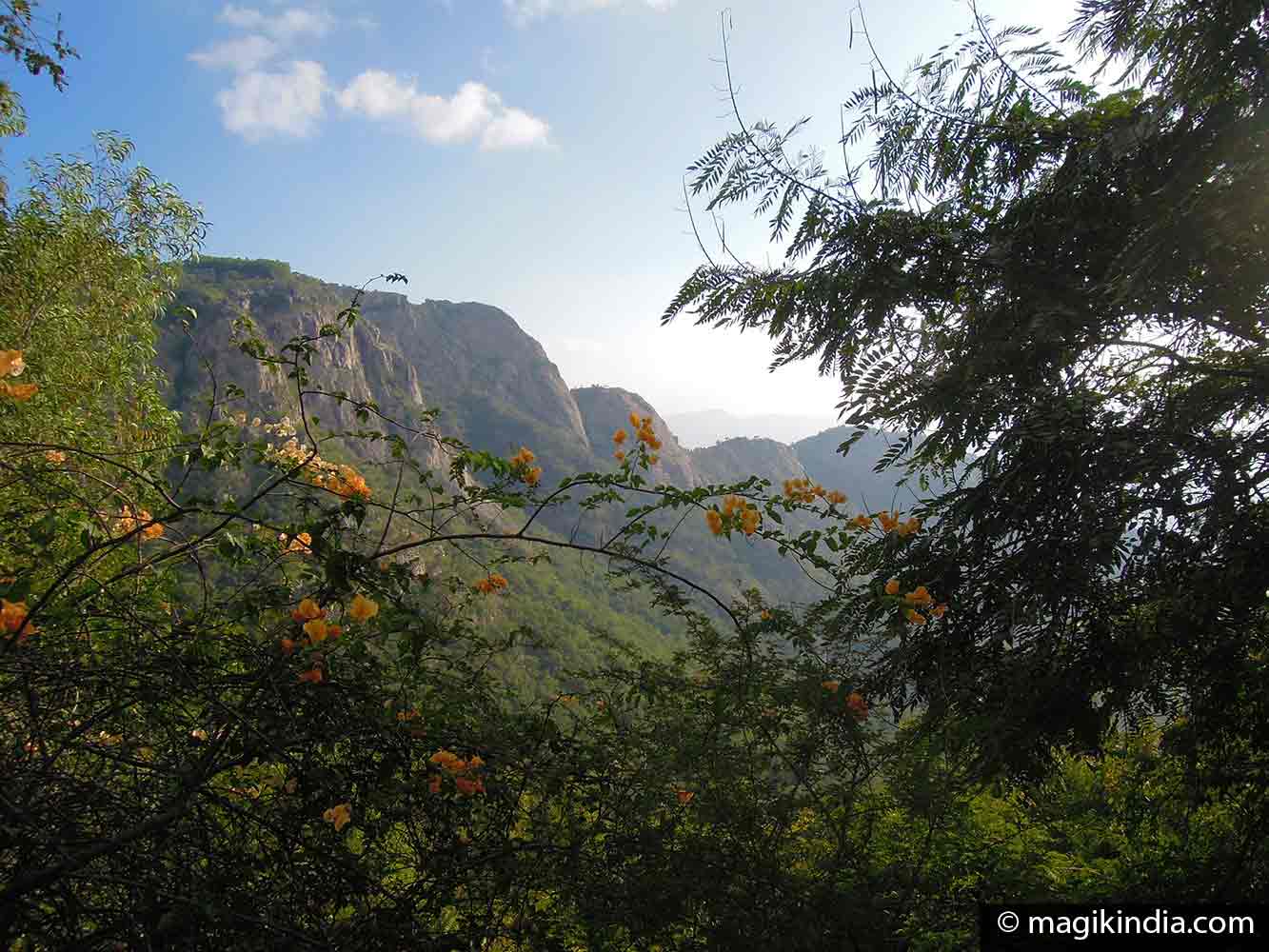
The Venkateswara Swami temple is erected at the top of the Venkatadri hill overlooking the city of Tirumala at an altitude of 850 m. The hill includes seven peaks representing the Sapta Rishis (the seven great Hindu sages): Seshadri, Neeladri, Garudadri, Anjanadri, Venkatadri, Vrushabhadri and Narayanadri.
Venkateswara Temple of Tirupati
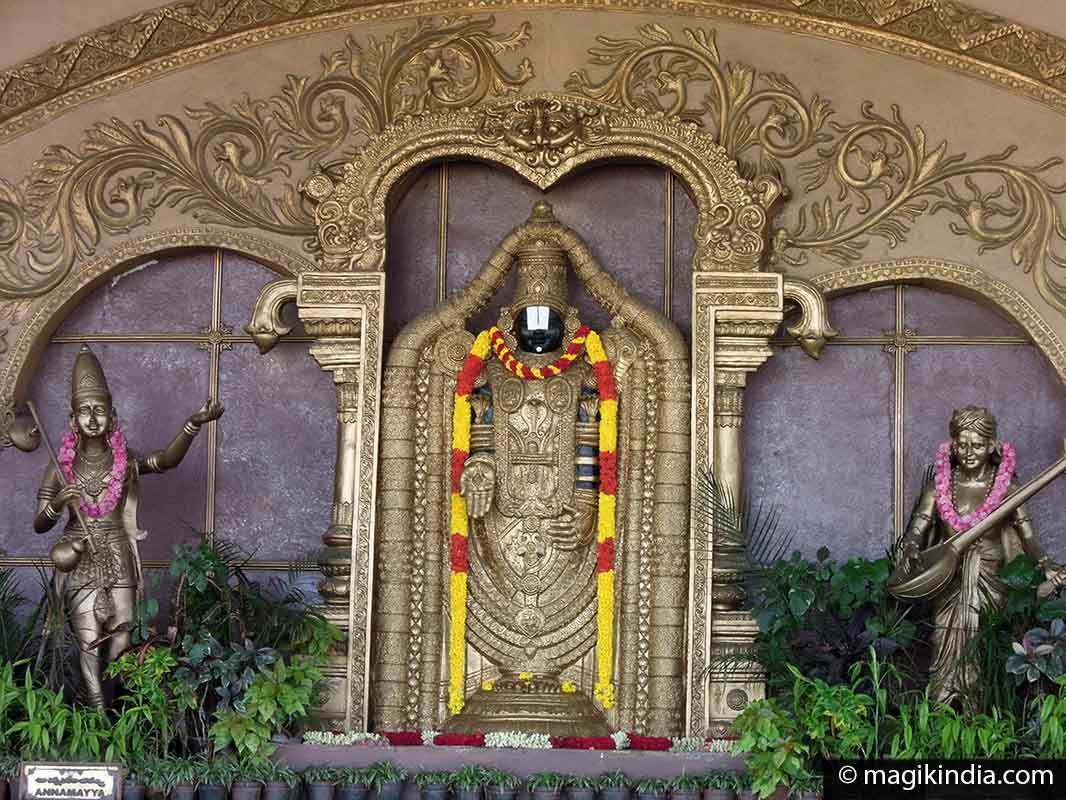
The temple is dedicated to Venkateswara, a form of Hindu god Vishnu, who would have appeared on earth to save humanity from the troubles of the Kali Yuga era (our current era) and guide it towards inner peace; the murti (idol) is therefore also called ‘Kaliyuga Prathyaksha Daivam’, literally, ‘the one who manifested during Kali Yuga’.
In the sanctuary, the black idol, stands with four hands, one in mudra varada (gift), one placed on his thigh and two others holding the Shankha (conch shell) and the Sudarshana Chakra, a weapon disc-shaped. The deity is also adorned with precious ornaments and carries on his right chest a statue of the goddess Lakshmi (goddess of prosperity) and on the left, the statue of the goddess Padmavathi, the reincarnation of the goddess Lakshmi on earth (see the story below).
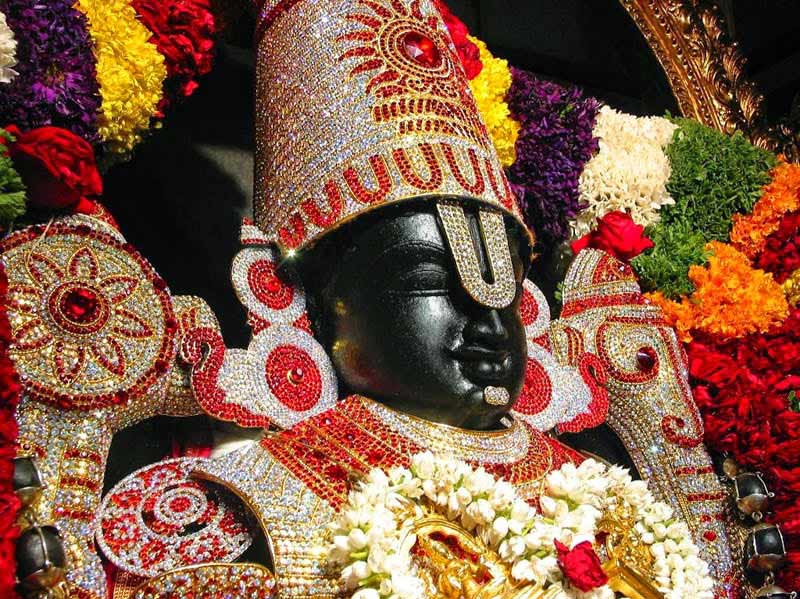
Hindu mythology tells that in ancient times, the Rishis (the seven saints) led by Kasyapa began to make an offering on the banks of the Ganges. The sage Narada visited them at that time and asked them the meaning of this ritual. As they couldn’t find an answer to his question, the Rishis approached the sage Brighu who went to ask the Hindu Trimurti (Shiva, Brahma and Vishnu) about it.
The sage went to see Brahma and Shiva but he was very disappointed with their lack of hospitality, so, the sage went to Vaikunta, the home of Lord Vishnu, but was Vishnu didn’t even pay attention do him. To get Vishnu’s attention, the sage kicked him in the chest.
It turns out that Lakshmi, Vishnu’s wife, resides in her husband’s chest; so she felt insulted and left Vaikunta for the earth. Vishnu came down to earth in search of Lakshmi who, in the meantime, had reincarnated as Padmavathi in a royal family. Vishnu married her on the hills of Tirupati and made it his home on earth.
To have the Darshan (sight) of the deity, you will have to be patient, you may have to wait several hours in single file in the corridors of the temple. The best option for you is to book online a ‘Seeghra Darshanam’ entry for 300 rupees, you will only wait a few hours against a whole day. Foreigners are only admitted after registering with the temple authorities who will ask what interest you have in visiting the shrine.
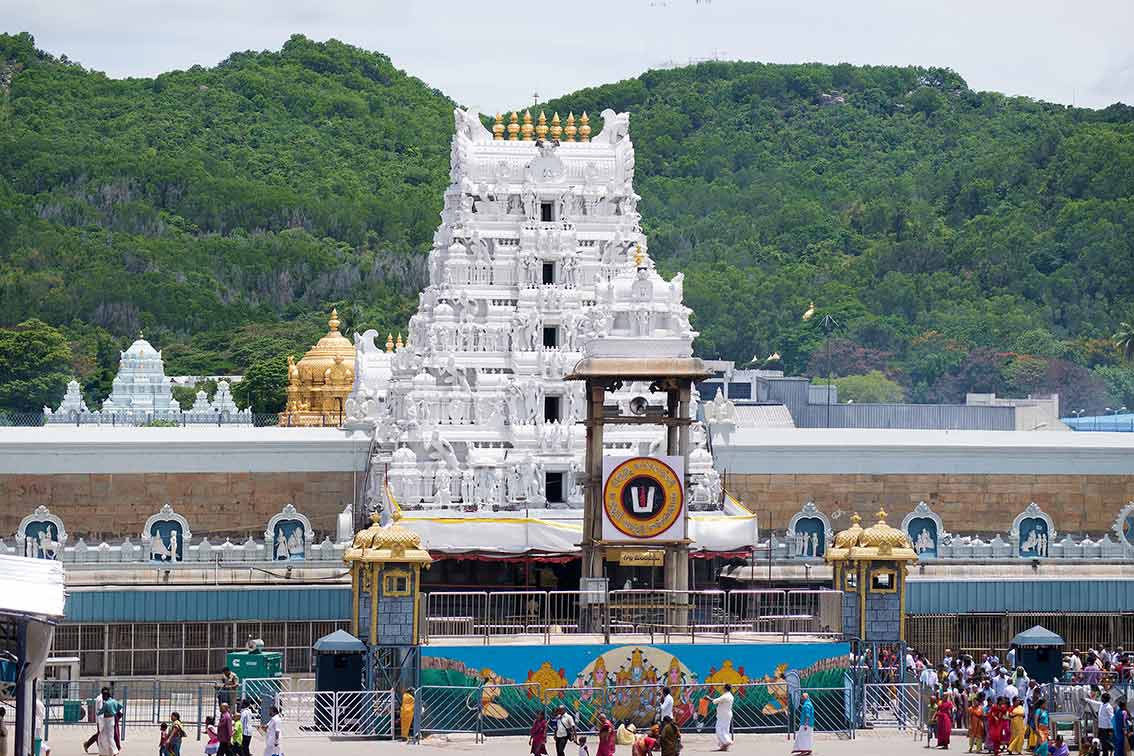
The architecture of the temple is rather modest compared to other Hindu shrines in southern India, it follows the style of Dravidian architecture with several white gopurams (towers) carved with deities and a gold dome (Ananda Nilayam Vimanam) above the inner sanctum.
The construction of the Tirupati Balaji temple would have started in 300 of our era with later additions made by various royal dynasties, the most important of which was that of the Vijayanagara (Hampi) who poured gold and diamonds into the treasure of the temple. The interior roof of the temple was gilded during the reign of Emperor Krishnadevaraya in the 16th century.
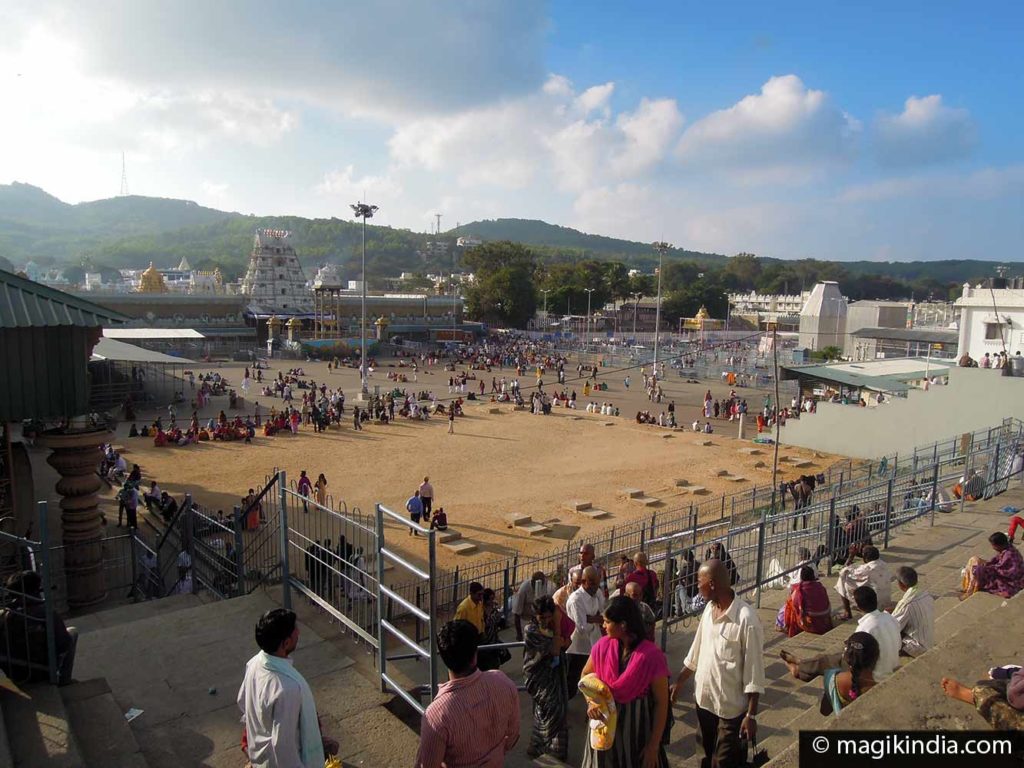
One of the richest temples in India
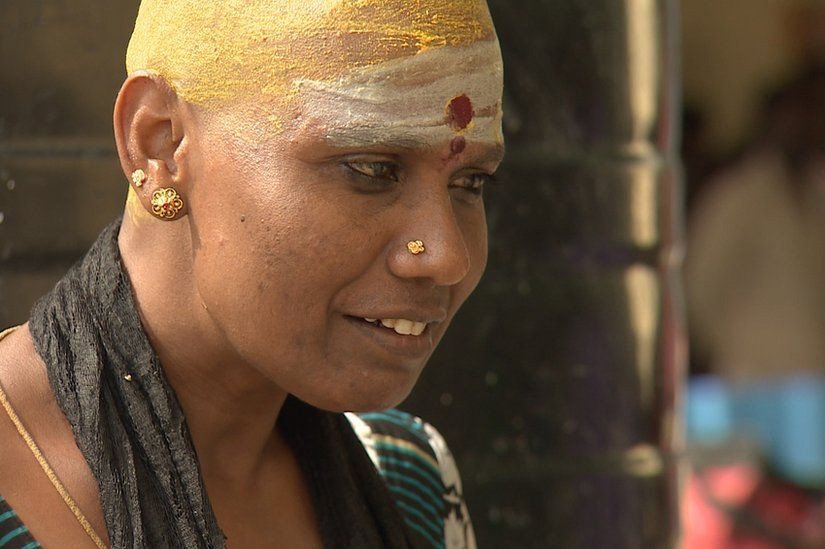
Tirupati is the second richest temple in India (if not in the world) after that of Sri Padmanabhanswamy in Trivandrum, Kerala. Here, pilgrims make substantial donations of cash and gold, but they also donate their hair to attract good luck or for a wish to be fulfilled.
For the Hindu faithful, it is a real act of devotion, of faith and of sacrifice, especially for Indian women who are known for their beautiful long and thick hair they rarely cut. However, for the Tirupati temple, it is a juicy business; it is the temple that collects the most hair in the world, it is estimated that it brings in an average of 3 million euros per year. The hair is then processed and sold to make wigs that are exported worldwide.
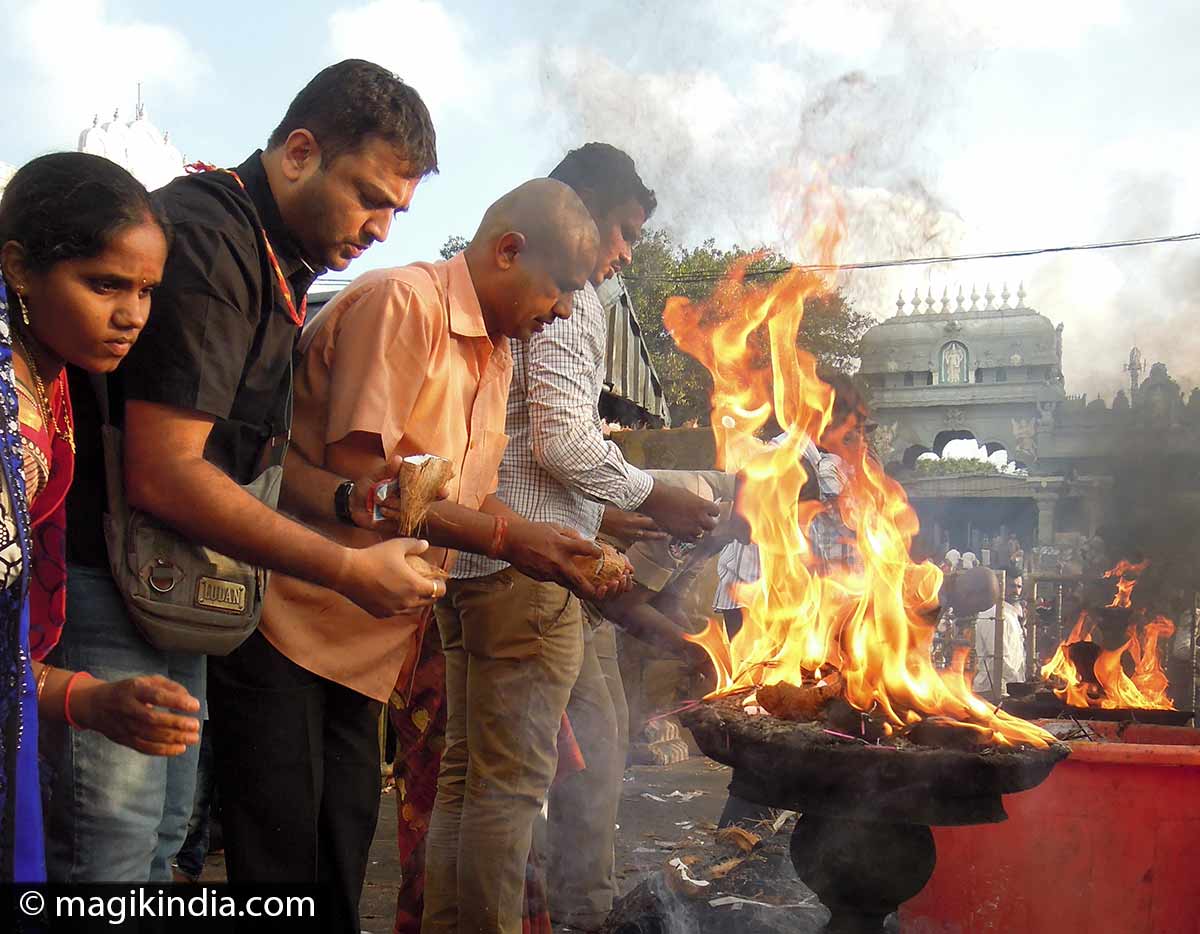
Tirupati laddoo (Sri Vari)

Hindu worshipers rarely leave Tirupati without purchasing ‘Sri Vari’ laddoos offered as Naivedhyam (offering to god). These special laddoos are then given (sold) to the faithful as prasadam (holy food). ‘Sri Vari’ Laddoo is prepared in the kitchens (potu) of the Tirupati temple.
The main ingredients of this round candy include chickpea flour, cashews, cardamom, ghee (clarified butter), sugar, candy sugar and raisins. The laddoo ‘Sri Vari’ of Tirupati is a protected geographical indication and only the Trust that manages the temple can manufacture and sell them. It is estimated that about 150,000 Sri Vari laddous come out of the temple’s sacred kitchens daily.
Sri Bedi Anjaneya Temple
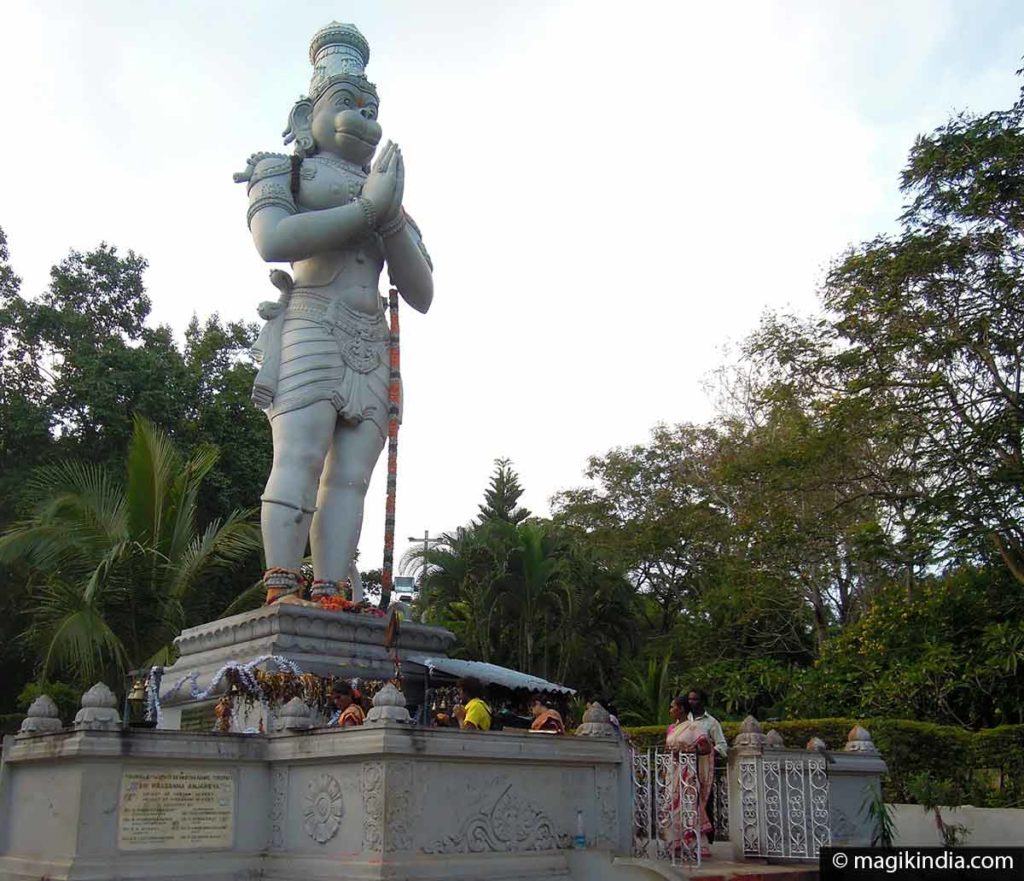
Right in front of the Balaji temple is that of Sri Bedi Anjaneya Swami, which is also visited by a large number of faithful. It is customary to visit it after that of Balaji and Bhu Varaha swamy located around the main temple.
The idol of the Sri Bedi Anjaneya temple is the monkey god Hanuman (Anjaneya). This 6 meter statue has hands joined in Anjali mudra (namaste). The devotees meet at Hanuman’s feet to make offerings and wishes.
Legend has it that one day, during his stay on the hills of Tirumala, the son of Anjana Devi, the young Hanuman (Bala Hanuman) wanted to leave the hills in search of a camel. To prevent his beloved son from leaving, his mother Anjana Devi tied his two hands (Bedi), and ordered him to stay there until he returned. Later, Anjana Devi left the hills of Tirumala and moved to the Himalayas near the Akash Ganga leaving Hanuman alone in the hills.
Lord Sri Venkateswara seeing his devoted disciple standing alone in front of his temple, asked the priests to feed him until his mother returns. This is why the naivedyam (holy food) offered daily to Sri Venkateswara and Varaha swami, is also brought to the temple of Hanuman.
For some unknown reason, the mother of the monkey-god never returned to Tirumala. Hanuman, who is the symbol of devotion, stayed in the hills according to the orders of his mother and, apparently, he is still there …
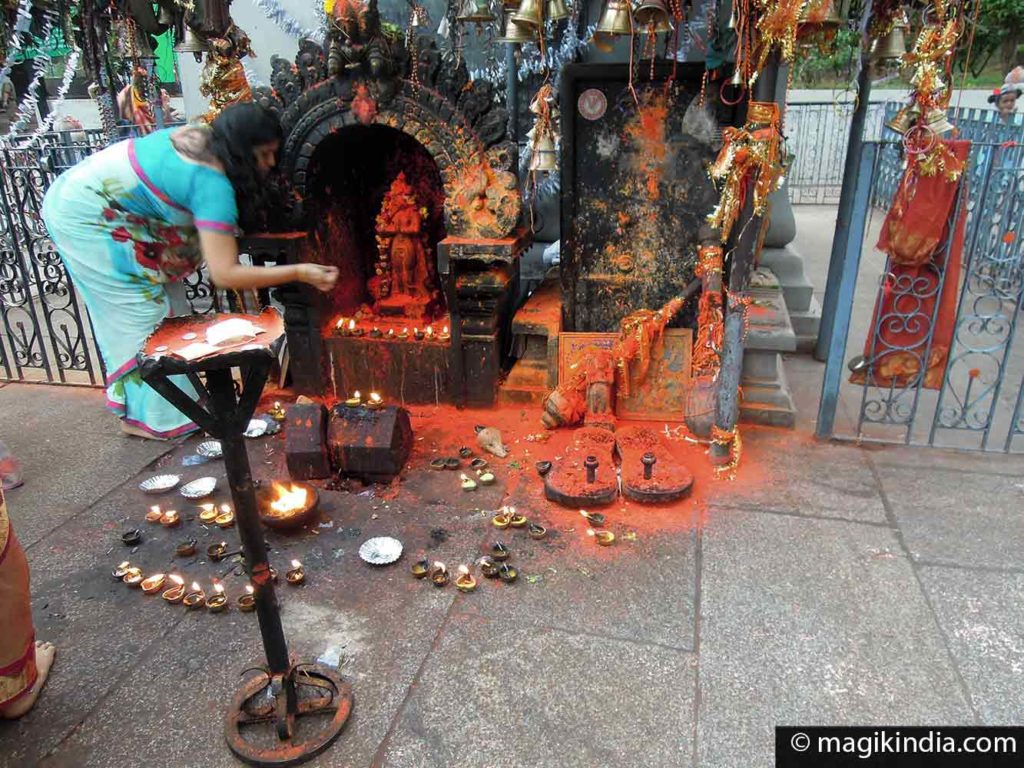

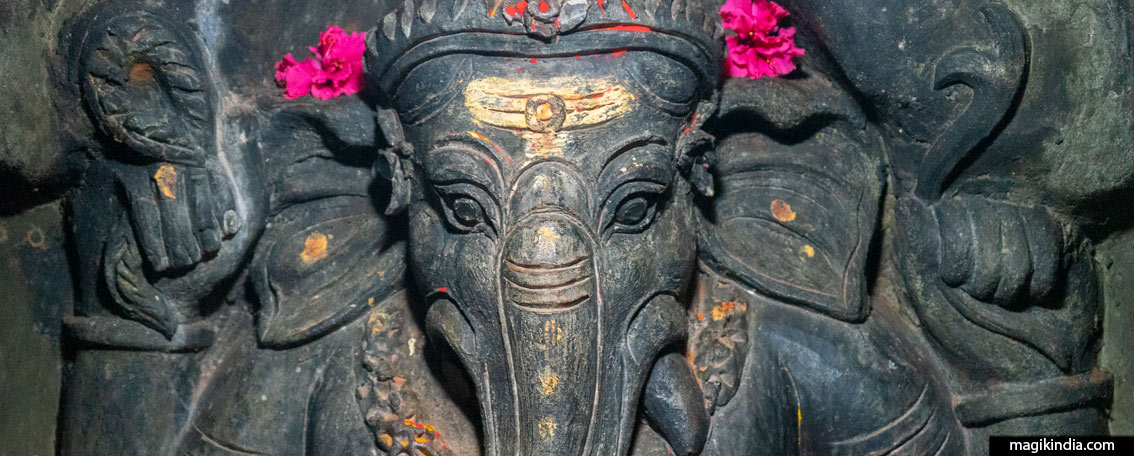
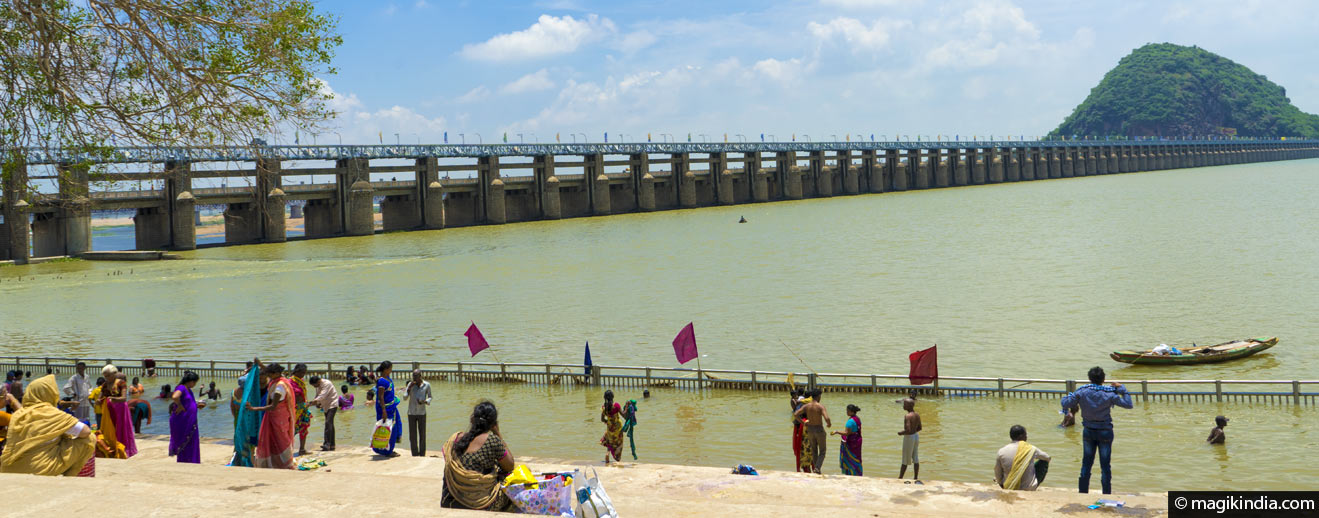
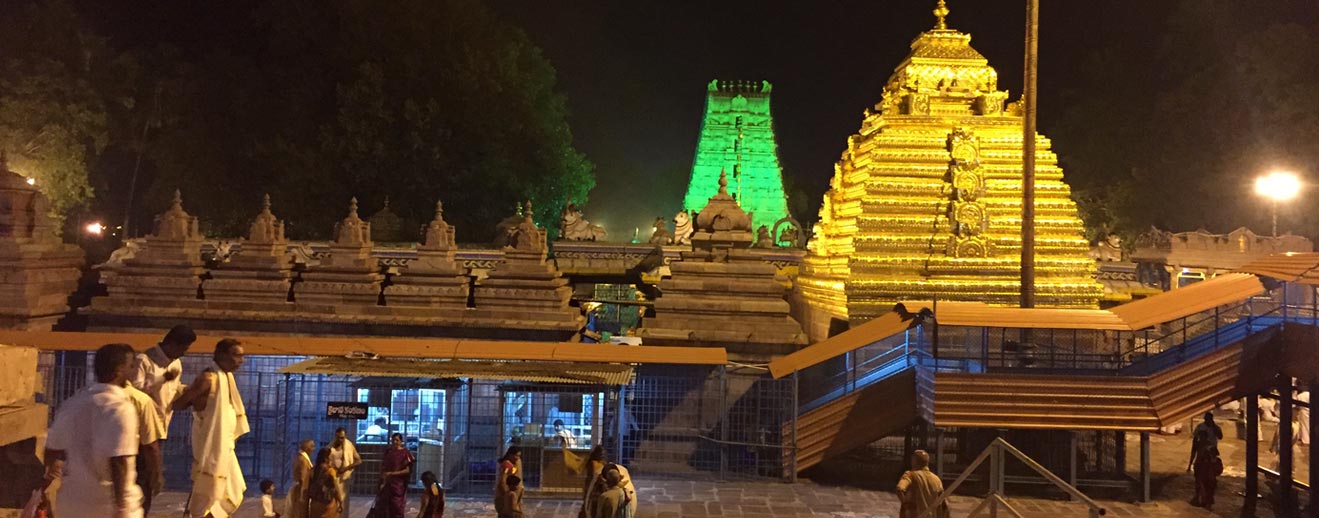

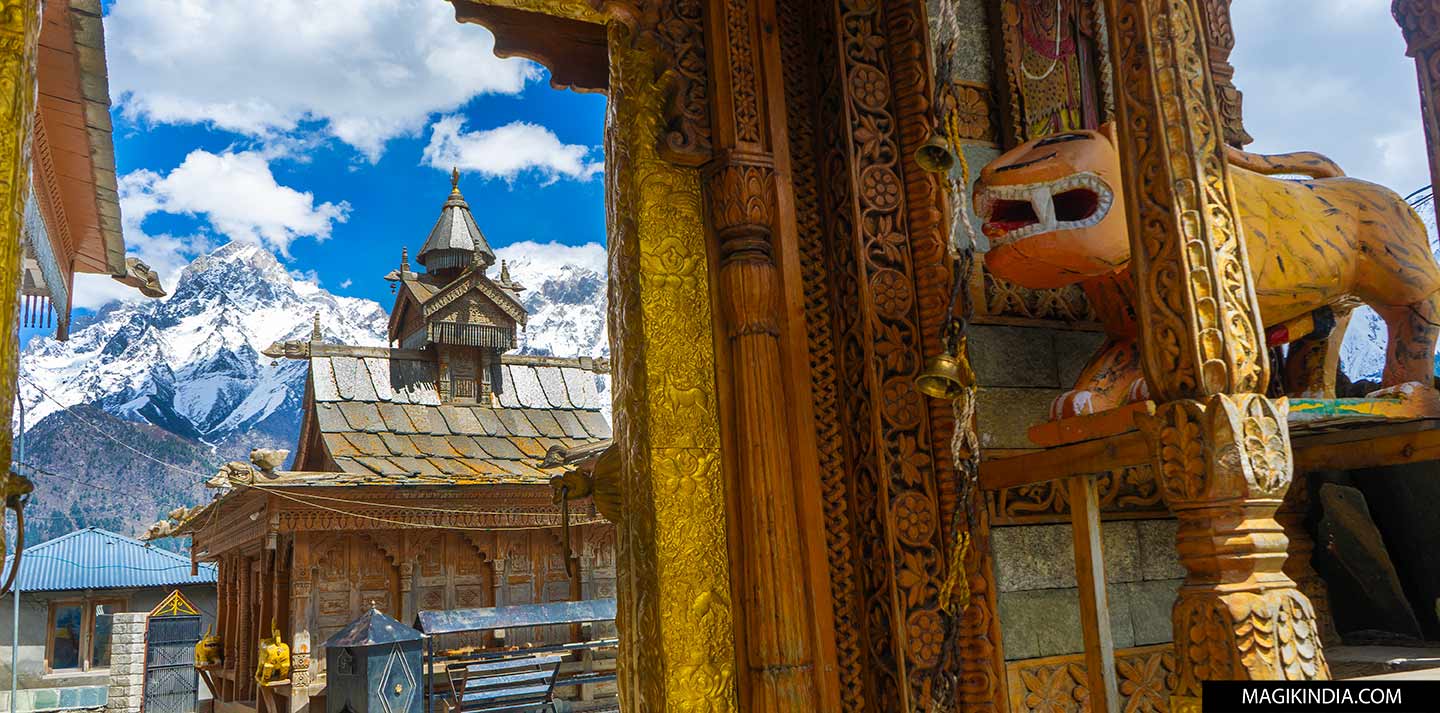
Very nice your article, thanks for sharing Chennai to Kanchipuram and Mahabalipuram One Day Tour Packages. Morning Visit to Kanchipuram: kamatchi Amman temple, Varatharaja Perumal Temple, Vaikunda Perumal Temple, Kailasanathar Temple, Ekambareswarar Temple. Evening Visit to Mahabalipuram: Shore Temple, Pancha Rathas, Tiger cave, Kovalam Beach.
Dear sir, I don’t promote travel agency or any kind of publicity on my blog. regards
Hi very nice blog! Very useful information, thanks for sharing !
Vidhya
Thanks Vidhya !
Hi
Thanks for share this information,,….. Nice article…….
Thank you sir. regards.